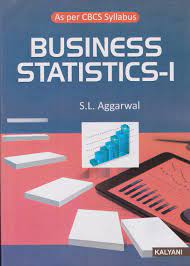COURSE DESCRIPTION:
| FIM course is designed to provide comprehensive understanding of Indian financial system and role of various financial institutions in economic development. This provides knowledge how money market differs from capital market and its instruments. Its gives an insight on evolution of corporate debt market in India and describes the role and functions of stock exchanges in development of equity culture. |

- Teacher: Dr. KUSUMA REDDY C
The course addresses the English language needs of the students at the undergraduate level. The focus will be upon four categories: Prose, Poetry, Vocabulary, and Grammar. In addition to these, the last two units focus on developing the writing skills of students by including essay writing and report writing. The content of the text raises questions of how English is used in India versus how it ought to be used and thus engaging the debates about a “standard English” and the need of adapting English to the local cadence and culture of India. Similarly, the British and American variations of the language are included to orient the students to broaden their view of English as an international language. Overall the course will focus upon the critical thinking faculties of the students concerning academic, linguistic, political, literary, and ethical concepts.
- Teacher: SAIKIRAN D
- Teacher: DEEPA AGRAWAL
- Teacher: Dr MICHAEL PREETHAM JAKKULA
Course Summary
Advanced accounting is 5 credit course. Preparing final accounts of partnership firm on admission, retirement, death and dissolution of a partnership firm & Preparing Company final accounts as per Schedule III of the companies act, 2013 including various accounting entities on issue of share and debenture are covered in the syllabus.
- Teacher: RUPINI B
Course Summery:
This course will introduce you to business statistics, or the application of statistics in the workplace. Statistics is how we gather, analyze, and interpret data. You can apply statistics to any number of fields, say Industry or Commerce or Trade or Economics etc., the course will begin with data distributions, followed by graphical representation, measures of central tendency, and measures of dispersion, skewness, kurtosis and correlation.
Course Objective:1. Develop the student’s ability to deal with numerical and quantitative issues in business
2. Enable the use of statistical, graphical and algebraic techniques
|
Course Outcomes |
|
|
After the completion of the course the student will be able to |
|
|
CO1 |
Able to apply fundamental concepts in exploratory data analysis. |
|
CO2 |
Develop skills in presenting data using appropriate diagrams or graphs. |
|
CO3 |
Determine the value of the mean, the median, and the mode of grouped and ungrouped data. |
|
CO4 |
Apply measures of location for central value of the data about which all the set of values of data lies. |
|
CO5 |
Knowledge of average of variation and dispersion of values. |
|
CO6 |
Calculate and interpret the various measures dispersion skewness and Kurtosis. |
|
CO7 |
Understand the relation between two variables by correlation. |
|
CO8 |
Apply different methods to find the strength of a linear association between two numerical variables. |

- Teacher: DAYANANDA BABU V